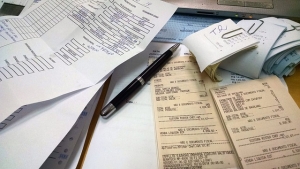Run your firm’s tax season as if you were advising a client on a business. Whether you are a two-person operation or a giant national firm, you need procedures to facilitate the tax preparation part of your practice. The following 12 best practices for tax season are adapted from the book, Managing Your Tax Season, Second Edition, and apply to any size firm:
1. Schedule work flow by coordinating client meetings, client submission of data and staff availability. For noncorporate clients, schedule and prepare returns on a first-in, first-out basis. Call clients and work out times for them to submit information. Tell clients which staff members will be working on the return and give an expected completion time. A two-week completed return policy can reduce the number of client calls, work in process, and scheduling problems, and can help speed up cash flow.
2. Schedule the proper level of staff to prepare returns based on the availability of mentors or trainers and the availability of proper tools. Make sure the staff knows how to make the best use of technology and that they understand the systems and checklists—and the importance of following and using them. Effective tracking of the workload for each staff person and each return is “management.” How well you manage ultimately determines the success of tax season—and the happiness and satisfaction of staff and partners.
3. Reduce the number of staff “touches” on returns by streamlining administrative processes. Don’t start a return until all of a client’s information is in the office; organize follow-up procedures for missing information; and have staff available to complete the returns they started. Time and work-flow systems can help track staff “touches.” Monitor the system on a timely basis to manage the process better in real time.
4. Schedule reviewers for big, complicated or difficult returns, and assign returns to the proper level of reviewer. Consider implementing a reviewer qualification test to ensure that your reviewers are prepared to handle issues that arise during a review (see sidebar, “Reviewer Qualification Test,” below). At a minimum, reviewers should undergo some training on the procedures that are implemented. Establish a firm-wide mindset of adhering to procedures. That means partners can’t allow skipping steps in the process so a return can get sent out quicker.
5. Examine where bottlenecks exist and don’t let returns sit unattended. Often, returns are put aside at the review or assembly stage, with one or two open items that can easily be answered with a follow-up call to the client. Review and monitor the backlog of unanswered questions for returns that are mostly completed and reduce that backlog. Don’t let these returns linger.
6. Examine the relationship between time spent on return preparation versus time spent reviewing the return. An unreasonably long review time means the return wasn’t properly prepared with adequate and organized documentation. It is less expensive and more efficient to have a preparer put the information in order for the reviewer, rather than having the reviewer plunge through the backup. Requiring extensive, organized and indexed working papers or PDF files may take about 20 minutes per return but can reduce the time it takes the preparer to actually work on the return by approximately 50 minutes, and reduce the reviewer time by about a half-hour, resulting in a net gain of one hour per return. For a workload of 400 returns, this can save the equivalent of one full-time person during tax season. Also, the removal of a tedious part of the reviewer’s work can substantially raise the quality of the review. Note that work flow and scanning software can effectively eliminate much of the time spent organizing and indexing a client’s information, providing a very quick return on investment.
7. Try to measure productivity per preparer. Productivity is a measure of results, not time spent. Slower, more deliberate preparers may be more productive because they don’t need to redo every return they work on, and cause less work for the reviewers and partners. In the aggregate, the better staff will have overall higher realization, assuming fees are uniformly billed, because the clients they worked on will have had fewer touches on their work. Caution: In some firms better staff are assigned to high-fee clients. In some regards, high-fee clients could have lower realization because the fees are not what they should be for all the services provided. The result is that you use better staff and make less on them. The flip side is that less-skilled staff are assigned to smaller, less-desirable clients, and the realization ends up better on those clients because of less supervision and possibly less uncompensated extra work.
8. Effective use of technology can reduce dependence on additional staff. Proper training can help ensure that staff perform efficiently. Also, you and your staff should strive to have neat, uncluttered desks and work areas. If you are “paperless,” then be paperless. Adopt second monitors if you haven’t already. See above for information on work flow and scanning software.
9. Be clear on what needs to be done for each client, and make sure your staff is also clear. If clients tell you they do not want to pay extra for you to enter their checks into QuickBooks and they send you their checks unsorted, what will you do about it? Make sure your staff understands. What about the staff person who also does a bank reconciliation?
10. Bill the client when the tax return is ready. Unbilled tax returns are considered inventory in process. The longer you have them, the less they are worth.
11. Examine extension procedures and consider reducing extensions. Also review who prepares the extensions and when, and how the extensions are delivered to the client. Extensions create inventory and unbilled work and, in some cases, unpaid-for work.
12. Prepare estimated taxes for the current year when preparing an extension for a client. Although the amounts are likely to change, this estimate will help eliminate the need to touch the client’s file or to acclimate yourself with the client’s situation when estimated tax payments are due. It also helps the client plan cash flow. If the estimated payment vouchers are not prepared with the extensions, be prepared for a mini tax season for June 15 estimated tax voucher preparation.





















Add comment